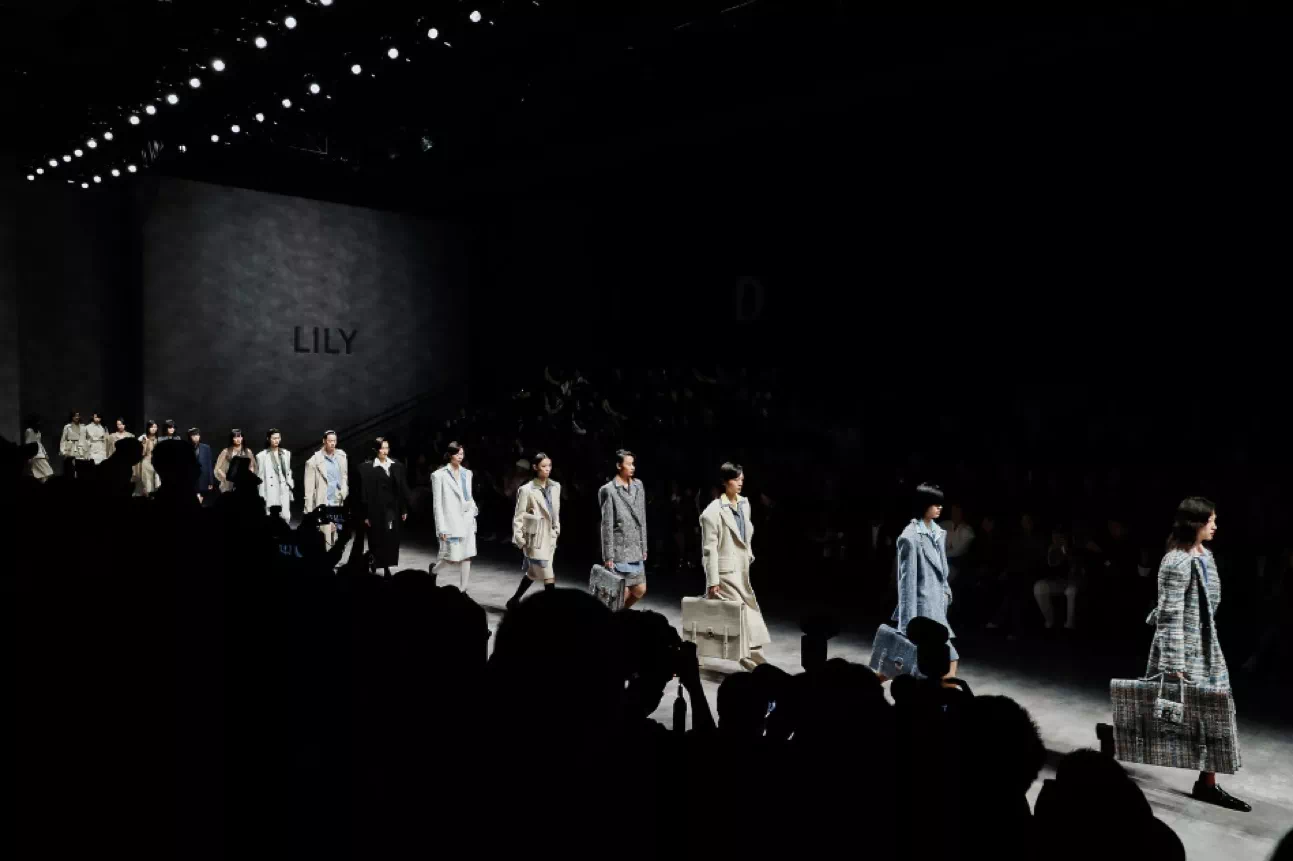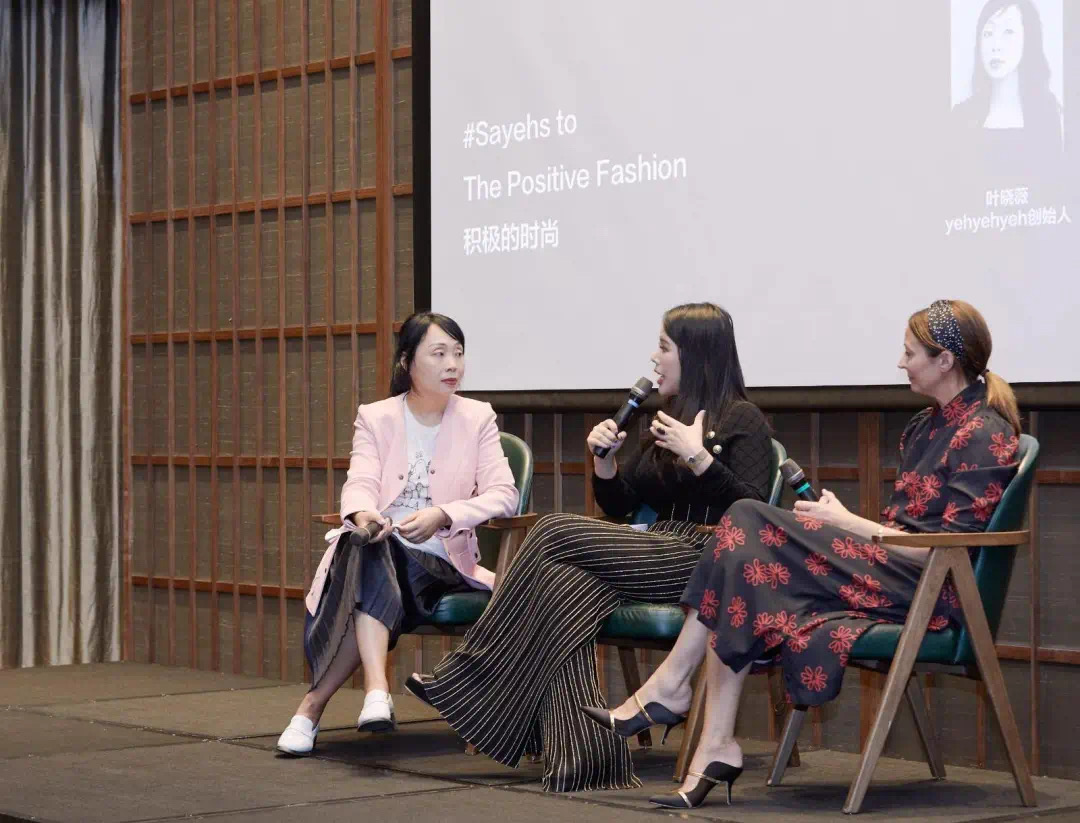
Shanghai Fashion Week remains one of the most classic Chinese fashion events on the global stage. /CGTN
Shanghai Fashion Week remains one of the most classic Chinese fashion events on the global stage. /CGTN
While last year was characterized by cautious optimism in the face of economic uncertainty, this year the COVID-19 pandemic has presented looming clouds on the horizon that could dampen global fashion business growth.
However, China is an exception, as digital business has illuminated the gloomy atmosphere. China has deflected the blow of the health crisis and continues to see considerable luxury market increases after a small setback due to nationwide lockdowns. According to the Business of Fashion-McKinsey State of Fashion Survey 2019, the Greater China area has for the first time in centuries overtaken the U.S. as the world’s largest fashion retail market.
Unsurprisingly, the added value of the digital economy accounted for more than one-third of China's GDP in 2019. The country's e-commerce sales surpassed the combined total of Europe and the United States. Today, in the shadow of a global economic downturn caused by the virus, China owns the largest digital buyer population in the world, amounting to more than 710 million people.
Indeed, Chinese fashion industry insiders are busy this year, even though COVID-19 has disrupted business as usual. Among them, digital fashion players in this game have seen an unexpected peak, as online buyers have started pouring into e-stores, big and small, to experience their amazing virtual shopping journeys amid strict external restrictions.
02:52

“China has become the place the fashion world goes to find the most flexible, fast, and fun platforms with digital-savvy customers,” said Simon Collins, founder of design education center WeDesign and a former dean at Parsons School of Design in New York. “The old way of selling a Western brand in the Chinese market no longer works. We in this industry have to embrace the new trends, the digitalized marketing, supply chain, customer engagement and mass culture here in China are leading the world,” he said.
The audience has changed, likewise. Chinese Gen-Z customers, with better financial conditions than their parents’ generation, don’t buy the idea of “unreachable high fashion.” They define the market by digital tools from social media to e-stores, to make streetwear a mainstream, young culture a new sexy, and haute couture a virtual fashion frenzy. Amy Fan, founder of a young fashion forum called Fashion Zoo, said fashion culture is being reformed as the younger generation integrates online resources to shape a unique Chinese lifestyle culture.
“Customers here are more awakened. The young generation are digital natives, and meanwhile they are global citizens. Global companies have to go digital and offer offline channels so people in China can purchase in a seamless way. The times of branding yourself only as an international brand without joining the competition on/offline have long gone,” Robert Butler, economic consul at the British Consulate-General in Shanghai, said at a panel talk of sustainable trends organized by Fashion Zoo in the city.
While China might have passed its manufacturing zenith in fashion apparel, it will remain an indispensable power for the digital fashion economy in the coming years. Alibaba, JD.com, Secoo and all other e-tailing giants remain energetic in this market by continuously releasing new shopping tools. Livestreaming was endorsed by the government as a new lucrative retail market, and group-on luxury purchasing has regained the focus of Chinese consumers. With new international retail models integrating into the Chinese market in the post-COVID period, the domestic fashion industry is now seeking its own moment.
“British brands in the Chinese market are handling different cultures, different demands in the system, different tiers of cities, and the fast-changing digital climate,” said Butler, who has been working in China for many years in culture and economic sectors. Based on his observation, one thing is true: Chinese fashion businesses are becoming more localized in terms of design and commercialization.

The Chinese market in the post-COVID period is seeking its own moment. /Shanghai Fashion Week
The Chinese market in the post-COVID period is seeking its own moment. /Shanghai Fashion Week
Fashion insiders told CGTN they remain confident in the need for brick-and-mortar stores, though they do think the new era has come. The shopping experience consumers derive from livestreams and online stores may spur sales, yet the feeling of touching a garment and trying on shoes brings a different kind of pleasure to shoppers.
Commercially, there is still space in the Chinese market for physical stores to further develop. Collins said physical gatherings are still happening in both China and overseas, even during the virus period. “Customer engagements and brand promotions won’t be complete if companies only reply on digital channels," he said. "E-commerce is a good, smart and productive way in the digital era, but technologies are not everything – fashion is made by people and should be enjoyed by flesh and blood."
From the perspective of fashion workers, brick-and-mortar stores shaped their initial understanding of fashion. Most of today's designers were not born in the internet era, thus it’s hard for them to form design and brand concepts based entirely on a digital mindset. In contrast, they like to create offline stores with unique designs, look for more opportunities to engage with real people and gauge the market in a more tangible way.

Shanghai Fashion Week featured topics on sustainability and design experiments. /CGTN
Shanghai Fashion Week featured topics on sustainability and design experiments. /CGTN
Masha Ma, a world-renowned Chinese designer, said she loves conveying her design ideas to her customers via something they can touch, whether it's clothing or other concepts. She said that is the way to "complete a designer’s mission."
“You just cannot skip the offline stores,” said Michael Zheng, production director of Shanghai Haute Couture Fashion Week, who’s been working in the industry for decades.
“The runway makes people scream, and showrooms offer people very specific feelings on fashion. This industry in China will always need these events, gatherings, forum, seminars and shows to grow in an organic way. And this is something e-tailing cannot achieve."
China's fashion industry will enter the spotlight again as Shanghai Fashion Week opens in October. It is the first world-class offline fashion week welcoming visitors since the coronavirus, aiming to enhance the faith and enthusiasm of the whole industry. But it will still take advantage of Chinese e-commerce. By collaborating with Tmall.com to release the "Watching is Buying" project, the fashion week again signifies China's power in a new digital era.
Correspondent: Bi Ran
Video editor: Chen Shi
(Cover image via Shanghai Fashion Week)